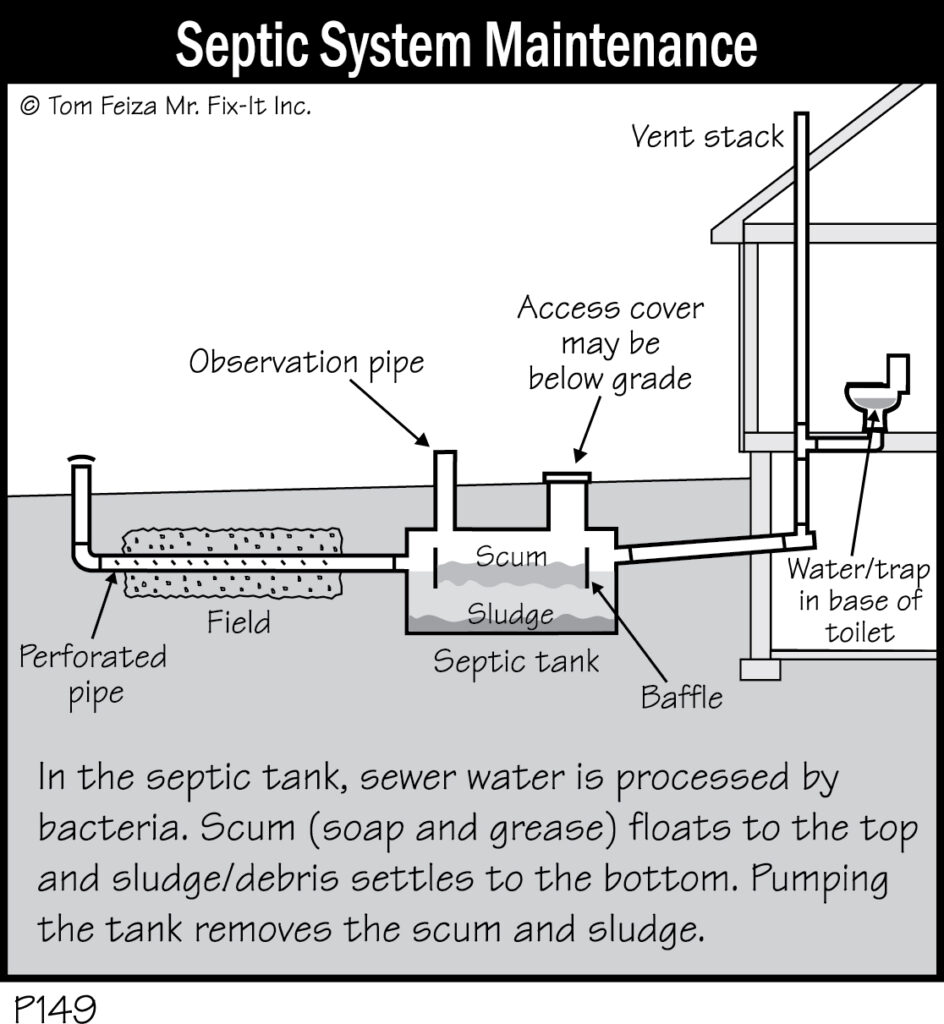Private sewage disposal systems (septic systems) have developed over the years to be efficient and effective, but they do need routine maintenance. You are responsible for maintaining the system. Check with the installer and your local municipality to determine the type of maintenance needed.
In general, residential septic systems rely on anaerobic (no air required) bacteria which work continually in the septic tank to break down human waste. Grease and other materials lighter than water rise to the top of the tank and are trapped behind baffles. Some processed waste become sludge and settles to the bottom of the tank with any other heavy items.

The tank must be pumped out and inspected periodically. The frequency of this maintenance depends on your system and how much use it gets. Normally, the system must be pumped about every two years. Your local municipality may also require routine pumping and might maintain records of your system maintenance.
Pumping the tank removes the floating debris and the settled sludge. It is important to remove these materials periodically so they can’t enter the leach bed or drainage field. Only relatively clean water should enter the drainage field. Grease or sludge entering the field can block drainage and ruin the system.

